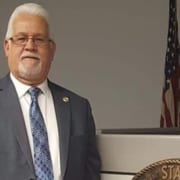Medical Arts Pharmacy is the location Thursday for an hourlong event called “Healthy Aging Days,” designed to help senior adults live their healthiest lives.
Representatives of Truentity Health, a Raleigh-based company dedicated to transforming community pharmacies into modern clinical hubs, will share information aimed at seniors on topics including essential health practices, chronic disease management, nutrition and the benefits of a growing trend in health care – remote patient monitoring.
The event begins at 10 a.m. at Medical Arts Pharmacy, 253 Ruin Creek Rd. Sales and Marketing Manager Cara Kirby encourages those interested in attending to RSVP at 252.492.3404.
The session is designed to empower the aging population with the knowledge and tools they need to take charge of their health, according to information from Mike Desai, co-founder and CEO of Truentity.
Staff from the Henderson Family YMCA also will be on hand to offer exercise routines tailored explicitly for seniors, focusing on a holistic approach to healthy aging.
This free community event underscores Medical Arts’ commitment to enhance the well-being of residents in Henderson and surrounding areas.
According to information on its website, a mission of Truentity Health is to “revolutionize community-based healthcare by transforming independent pharmacies into dynamic clinical hubs in just 14 days. Recognizing that Medicare patients visit their pharmacists six times more often than their doctors, we leverage these frequent interactions to create powerful clinical connections.”
Remote patient monitoring piggybacks off the recent popularity of telehealth meetings during the COVID-19 pandemic. Historically used to monitor patients with chronic conditions like cardiac disease, diabetes and asthma, healthcare providers are using digital medical devices to collect data about blood pressure, pulse rate and blood glucose, among others. The data is electronically transferred to providers for quicker care management when the need arises without coming into a medical office or hospital.
Visit https://truentity.health/ to learn more about its programs and services.











